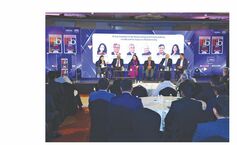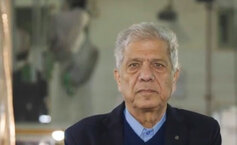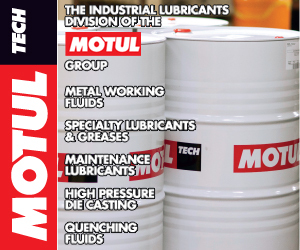
For Gaurav Rungta, Managing Director of MAN Structurals, manufacturing is not just an industry but a generational legacy. The company's journey is deeply intertwined with India's industrialisation, tracing back to the late 1800s when the Rungta family migrated from Rajasthan's Shekhawati region to Mumbai. Over time, they ventured into diverse industries, including sugar, textiles, and steel manufacturing.
In the early 1940s, Sir Mirza Ismail, then Prime Minister of Jaipur, invited the family back to Rajasthan to spearhead industrialisation. "That's how this area became an industrial hub," recalls Rungta. Their foray into steel manufacturing led to a natural progression—forward integration into transmission tower manufacturing in 1960. By 1970, it had evolved into an independent business, cementing its place as a key player in India's power infrastructure.
Overcoming challenges and scaling new heights
The early years were fraught with challenges. "We had very few designers in the country, specifications were unclear, and even though steel was available, it wasn't always of the required grade," Rungta shares. To bridge these gaps, MAN Structurals brought in international experts to train their workforce and collaborated with rolling mills to develop specialised steel.
Technological evolution played a significant role in the company's growth. "A typical 220 kVA tower that once weighed 30-35 tons has now come down to just 12 tons," he says, attributing this transformation to better aerodynamics, high-tensile steel, and advancements in conductor technology.
When India's telecom revolution took off in the 1990s, MAN Structurals became the first domestic manufacturer of telecom towers. "Siemens and Ericsson were then importing towers from Europe—we were the first to manufacture them in India," Rungta notes. The Infrastructure built by them supports major telecom players and even the Indian Army's networks across Northeast India and Jammu & Kashmir.
The company continued to innovate, becoming an early adopter of solar infrastructure. "Earlier, solar structures were imported from Europe and China. We set up a manufacturing facility, bringing in machines from Europe and China to produce them here," says Rungta. Over the years, MAN Structurals expanded into railway electrification, windmill tower manufacturing, and turnkey infrastructure projects, reinforcing its role as a diversified infrastructure solutions provider.
A bold vision for expansion
From an initial manufacturing capacity of 6,000 tons annually, MAN Structurals has scaled to an impressive 75000 tons. The company has invested in state-of-the-art technology, including fully automated CNC and robotic galvanising lines imported from Germany and the UK. Now, with a new plant being set up in the Middle East and a high-tech facility in Jaipur, Rungta is gearing up to double production capacity to 150,000 tons.
Their decision to invest in cutting-edge galvanising technology during the pandemic raised eyebrows. "Everyone thought we were making a mistake, but we believed in thinking ahead of the curve," Rungta shares. When demand surged post-pandemic, they were among the few ready to meet large-scale infrastructure needs.
Looking ahead, Rungta sees immense opportunities in both India and the Middle East. "The National Electricity Policy projects a need for two crore tons of transmission towers by 2035—far beyond current production capacity," he points out. With demand outstripping supply, the future looks ripe for expansion.
Building systems, not just businesses
The pandemic was a period of immense challenge, bringing financial strain and project delays. Yet, Rungta remained steadfast in his commitment to his workforce, ensuring that salaries were paid in full without cuts. "If we were struggling, imagine what our people were going through," he reflects.
The crisis highlighted the importance of making MAN Structurals system-driven rather than dependent on individuals. "If a company runs on systems, it functions seamlessly, regardless of individual changes," he explains. As part of this transformation, the company invested heavily in automation to reduce reliance on manual labour—a crucial step given seasonal fluctuations in workforce availability.
To bridge the skill gap, Rungta actively collaborates with ITIs to train skilled professionals. "Automation doesn't eliminate jobs; it creates demand for specialised skills," he emphasises.
Sustainability at the core
As the world migrates towards sustainability, Rungta believes in aligning business strategies with green initiatives. MAN Structurals has maximised solar utilisation, with 100% rooftop solar covering nearly 45% of its daytime energy needs. The company also operates as a Zero Liquid Discharge (ZLD) facility, ensuring complete water recycling. Their state-of-the-art sewage treatment plant even converts ocean water into drinkable water.
"Our waste management ensures that even chemicals like hydrochloric acid are neutralised responsibly," Rungta adds. Beyond sustainability, the company is closely watching the rise of green hydrogen. "The government is pushing for green hydrogen, which can generate electricity and also produce ammonia—a cleaner alternative to coal and gas," he notes.
Strengthening global footprints
MAN Structurals has steadily expanded its international reach, exporting to Africa, the U.S., Central America, and the Middle East. Their decision to establish a plant in the Middle East is a strategic move, allowing them to efficiently serve both local and African markets while optimising logistics. Exports currently contribute 20-25% of revenue, with a dynamic strategy that balances between domestic and international markets based on price realisations.
Evolving beyond manufacturing
At the heart of the company's success is its people-centric philosophy. "Quality is non-negotiable, and customer loyalty is built over time through trust and consistency," says Rungta. MAN Structurals boasts one of the lowest attrition rates in the industry, promoting a work culture where employees are empowered to make decisions and are recognised for their contributions.
With a foundation built on innovation, sustainability, and people centric growth, MAN Structurals is gearing up for its next phase of expansion—continuing its legacy of nation-building while scaling new heights in the global infrastructure landscape.



























